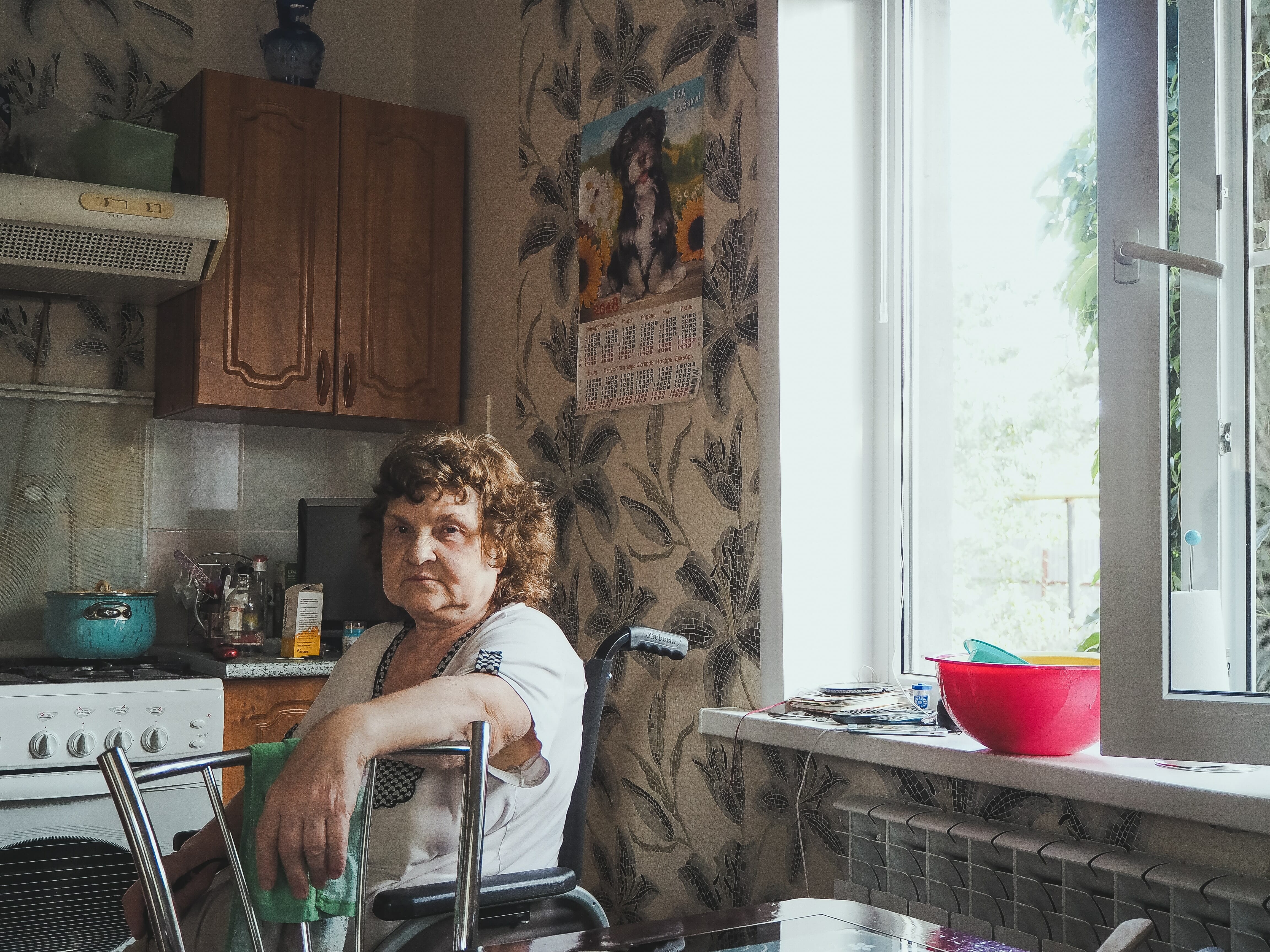Managing Changing Abilities

“Ageing with a disease is a complete loss of independence – I can no longer take care of the house, I can’t bend down to wash the floors or unload the laundry, I can’t walk up and down my stairs, so I can only stay on one floor. I no longer go out because I am too scared that I will fall, and I don’t trust myself. I just stay in my home all day.”
– Debra
We are living longer and healthier lives than previous generations. As we age, we tend to experience more chronic conditions, which are physical and/or psychological conditions that are long-lasting and require ongoing medical care. Some common examples include diabetes, arthritis, depression and Parkinson’s disease. They negatively impact our health, mobility, and quality of life.
One out of every three Canadians has at least one chronic health condition (Health Council of Canada, 2007). In Toronto, 46% of senior citizens had multiple chronic conditions in 2013/14. These figures will likely increase, given that the number of Canadians over the age of 65 is expected to rise from 4.2 million in 2005 to 9.8 million by 2036.
A diagnosis of a chronic illness can be difficult to cope with, and may mean we need to consider some major life changes. Unfortunately, our cities, neighbourhoods and homes are not always designed with our varied bodies in mind. With the right supports, modifications, and tools, we can take charge and manage the illness instead of letting it rule us.
How Chronic Illness Affects Daily Life

When ill with an acute illness such as the flu, we know that we’ll feel better and get back to normal soon. A chronic illness is different; it’s often lifelong and may disrupt our lives in many ways. We might experience bodily changes such as pain, fatigue, morning stiffness, and other physical limitations that limit our mobility and ability to engage in daily activities. Changes in mobility can also increase our risk of falling.
A chronic condition may require us to use more energy and time to complete everyday tasks like showering and getting dressed, challenging our ability to live as we might be used to.
It takes great strength to ask for help, but people often are more than willing to lend a hand. We may call on our loved ones or home healthcare providers for help with these daily tasks.
Changes in our abilities to complete daily activities can negatively influence the way we see ourselves. Chronic conditions are often accompanied by emotional challenges. The life changes that occur might make us feel like we are losing control, or connection with ourselves, leading to anxiety and uncertainty about the future. Rising stress can lead to feelings of anger, hopelessness and depression. When we don’t feel good about ourselves, we may withdraw and isolate ourselves from friends and family.
The effects of chronic illness are not limited to ourselves. A chronic illness has the potential to change our family members’ roles and routines. While some families develop unhealthy coping patterns, other families may grow closer. Their lives may take on new meaning as they find rewards and new relationships they hadn’t expected.
These changes might have us grieving for our old self, which we now feel is lost. To return to a fulfilling, rich and active life, we must re-learn about our body, ourselves and our lives.
Occupational Therapists Support Chronic Illness Management
“What occupational therapists really want is for you to be able to live your life as normally as possible; to live it the way you want to. My occupational therapist talked to me like a real human being who matters. I had no idea she would help me in so many ways.”
– Sam Aweida
Occupational therapists are skilled at collaborative problem-solving to manage the daily impacts of chronic conditions. This may include pain management, finding the right balance of physical activity, or learning to do everyday tasks in new ways. In the long run, Occupational therapy can enhance our quality of life and reduce the barriers our disability may create. The goals will depend on the nature and course of our condition.

An important part of managing chronic conditions is learning health-management skills. We may be required to monitor our blood pressure or sugar levels; shop and prepare meals according to our nutritional requirements; administer medications; or change our physical activity. If these tasks are not completed consistently and correctly, our condition may deteriorate, leading to adverse events and hospitalizations. Beyond following medical advice, there are many strategies that people may find helpful when they are living with a chronic condition.
Occupational therapists can help us take charge of our life by supporting us to manage our health. They examine barriers that keep us from successfully managing our conditions, and recommend routines to overcome these barriers. More specifically, occupational therapists may:
- Assess barriers that may prevent us from following medication regimens, such as limited physical capacity or poor memory. They provide recommendations for our routines and environments to optimise our medication management. This might involve helping us set up a schedule and reminder system that lets us know when to take our medications.
- Help us develop a “going out” routine for monitoring our blood glucose if we are embarrassed to do so when out with friends.
- Provide us with knowledge on nutrition, exercise, medication management, coping skills, daily living skills, and skills for overall wellness.
- Suggest simple strategies to help people manage their fatigue. For example, setting a schedule of activities a few days in advance can help people to balance the need to be active with the need to rest and recover.
- Help us manage challenging emotions through strategies like relaxation and breathing techniques.
- Identify ways to prevent injury, especially following a home safety assessment. For example, recommendations for home modifications, training in the use of walking aids and home exercise programs
- Support our efforts to include healthier behaviours in our day-to-day lives so that we can live securely and comfortably in our own homes.
Occupational therapists may also problem-solve with us on ways to manage fatigue, reduce or prevent pain, or simplify an activity. They may also:
- Suggest ways to manage fatigue through saving energy or changing our activities, so we have the energy left over to spend on what matters most to us.
- Consult with us on ways to plan our days so we can manage symptoms while accomplishing our daily tasks.
- Demonstrate the use of adaptive or “assistive” devices that can help us with daily activities such as dressing, getting in and out of a shower or bathtub safely; assisting us to use our computers to access the internet; or going outside for a walk
Occupational therapists work with us to take charge of our self-care so we can continue to engage with our friends and family and contribute to our communities in ways that are important to us. They are trained in methods for managing stress and coping with unexpected health changes by suggesting lifestyle adaptations that better support our well-being.





